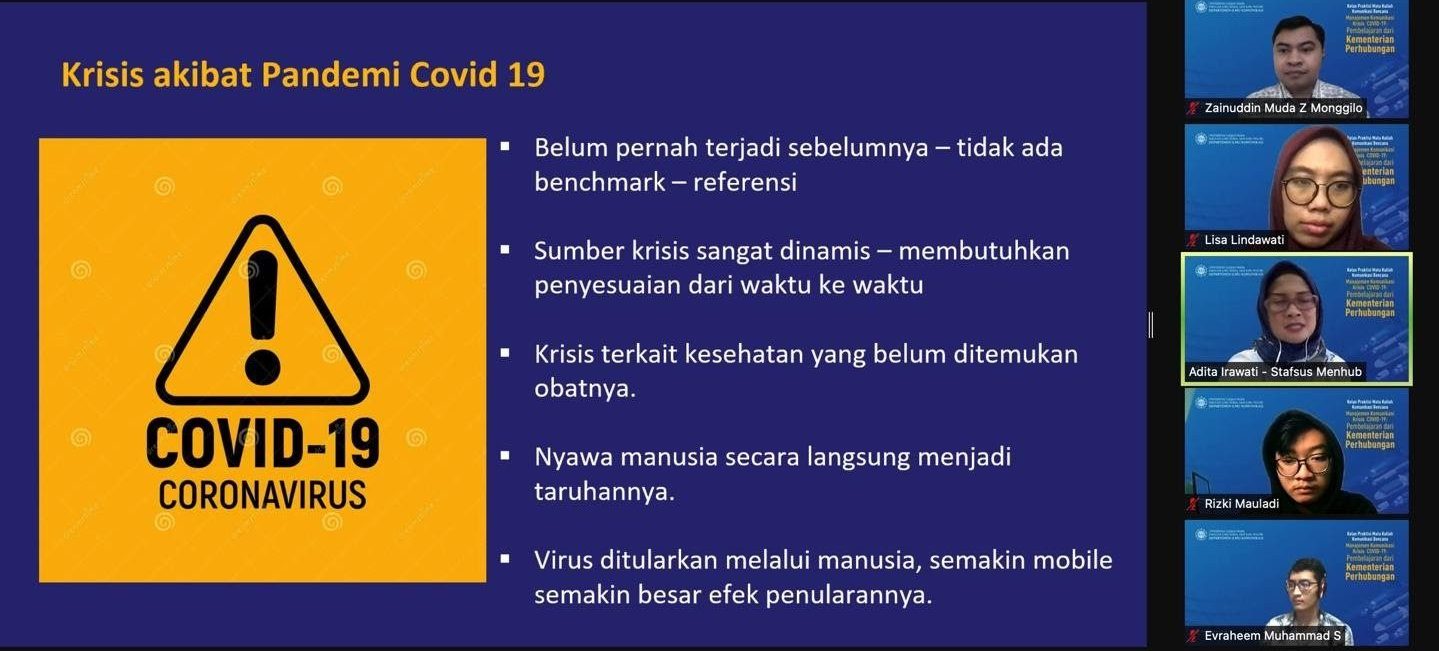
“Ideally, the pre-crisis process is about how we manage day-to-day problems by doing issue monitoring, media monitoring, and social listening. It’s a way for us to navigate our identification on when a crisis could happen,” Adita Irawati said
Adita added, other than having a navigation, system, and manual, an organization/company also needs to do a simulation. Even though a crisis doesn’t happen, simulation still needs to be done so that we can have a sense of an alert situation.
The COVID-19 pandemic can be categorized as a non-natural disaster that was caused by a virus and is related to the society’s health problem that is potentially deadly. This became a crisis because it never happened before, a constant adjustment is needed, a cure has not been found, and it is human-transmittable.

“When an issue affects us negatively, it becomes an urgent crisis that we need to solve through crisis management and good communication,” Adita Irawati said.
Furthermore, Adita explained how a crisis can be anticipated. First, we can do forecasting which is a part of the pre-crisis process meant to measure the opportunity and threat of a crisis and how we can overcome it. Second, prevention is needed by continuously monitoring and evaluating the working of an organization or company. Third, intervention is meant to end a crisis and minimize its impact.
“Crisis communication is an important part of the crisis management itself because if we can’t communicate well, it will create unnecessary problems which could be fatal, it could even abolish the trust that the community have towards an organization or company,” Adita added.
